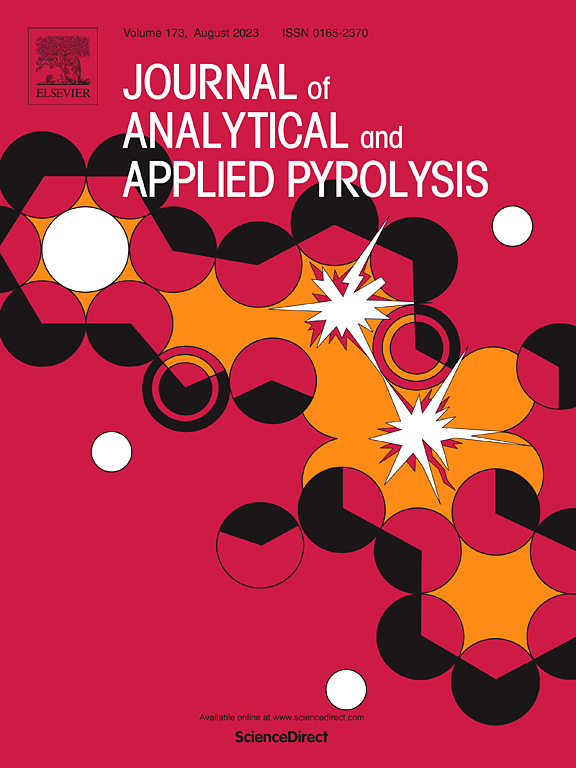碳化纤维素热解过程中初级和次级炭形成的研究
IF 6.2
2区 化学
Q1 CHEMISTRY, ANALYTICAL
引用次数: 0
摘要
通过焙烧制备生物质可以是一个合适的选择,以提高生物质原料的质量,为后续的热转化过程。碳化生物质热解产生的炭对下游工艺开发至关重要。本研究探讨了碳化纤维素的一次和二次炭的形成,二次反应的程度受样品尺寸、热解压力和热解加热速率的影响。纤维素样品在200°C, 260°C和320°C下固化,随后在1000°C的热板反应器中热解,加热速率为10-200 °C/min,压力为0.1或1000 mbar,使用薄膜或厚层样品。结果表明,焙烧引起的结构转变和热解条件促进的二次反应导致焦炭产率的显著变化,在1.6 wt%至57.8 wt%之间。在初级反应中,碳化通过两种方式促进炭的形成:降低碳水化合物结构的解聚程度和促进交联结构的形成。二次反应对热解条件的敏感性随焙烧程度的增加而变化,促进二次反应的最大增炭率随焙烧程度的增加而降低,为3.9 ~ 1.1倍。拉曼光谱结果表明,二次反应增强了焦炭芳香族体系的缩聚。这些发现为深入了解碳化生物质热解过程中初级和次级炭形成的复杂机制提供了依据。本文章由计算机程序翻译,如有差异,请以英文原文为准。
Investigation of primary and secondary char formation during pyrolysis of torrefied cellulose
Biomass preparation by torrefaction could be a suitable option to improve the quality of biomass feedstocks for a subsequent thermal conversion process. Char produced from the pyrolysis of torrefied biomass is critical to downstream process development. This study explored the primary and secondary char formation of the torrefied cellulose, with the extent of secondary reaction manipulated by the sample dimension, pyrolysis pressure and pyrolysis heating rate. Cellulose samples were torrefied at 200 °C, 260 °C, and 320 °C, and subsequently pyrolyzed in a hot-plate reactor at 1000 °C, under heating rates of 10–200 °C/min with a pressure of 0.1 or 1000 mbar, using either thin-film or thick-layer samples. The results indicated that the structural transformation induced by torrefaction and the secondary reactions promoted by the pyrolysis conditions led to significant variations in the char yield, ranging from 1.6 wt% to 57.8 wt%. Torrefaction enhanced char formation during the primary reactions in two ways: by reducing the degree of depolymerization of the carbohydrate structure and by promoting the formation of crosslinked structures. The sensitivity of secondary char formation to the pyrolysis conditions varied with torrefaction severity, with the maximum increase in char yield from promoted secondary reactions decreasing as torrefaction severity intensified, ranging from 3.9 to 1.1 times. Raman spectra revealed that the secondary reactions enhanced the condensation of aromatic systems of the char. These findings provide insight into the complex mechanisms underlying primary and secondary char formation during the pyrolysis of torrefied biomass.
求助全文
通过发布文献求助,成功后即可免费获取论文全文。
去求助
来源期刊
CiteScore
9.10
自引率
11.70%
发文量
340
审稿时长
44 days
期刊介绍:
The Journal of Analytical and Applied Pyrolysis (JAAP) is devoted to the publication of papers dealing with innovative applications of pyrolysis processes, the characterization of products related to pyrolysis reactions, and investigations of reaction mechanism. To be considered by JAAP, a manuscript should present significant progress in these topics. The novelty must be satisfactorily argued in the cover letter. A manuscript with a cover letter to the editor not addressing the novelty is likely to be rejected without review.

 求助内容:
求助内容: 应助结果提醒方式:
应助结果提醒方式:


